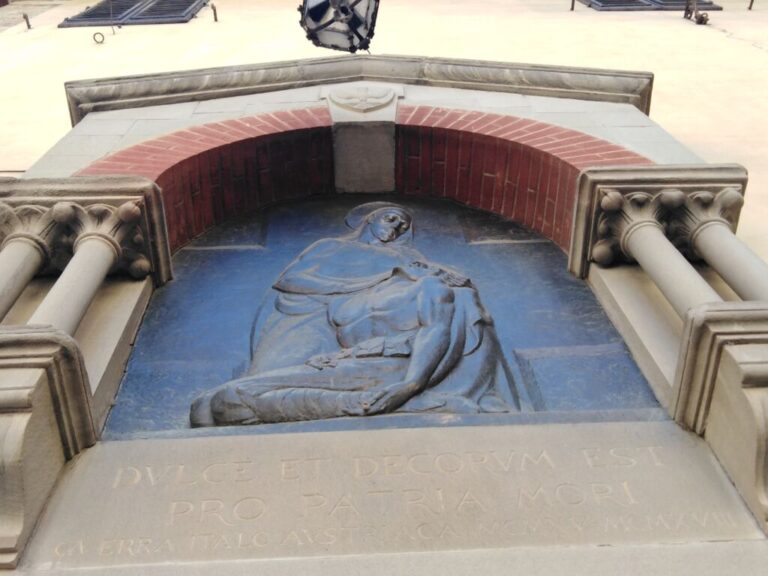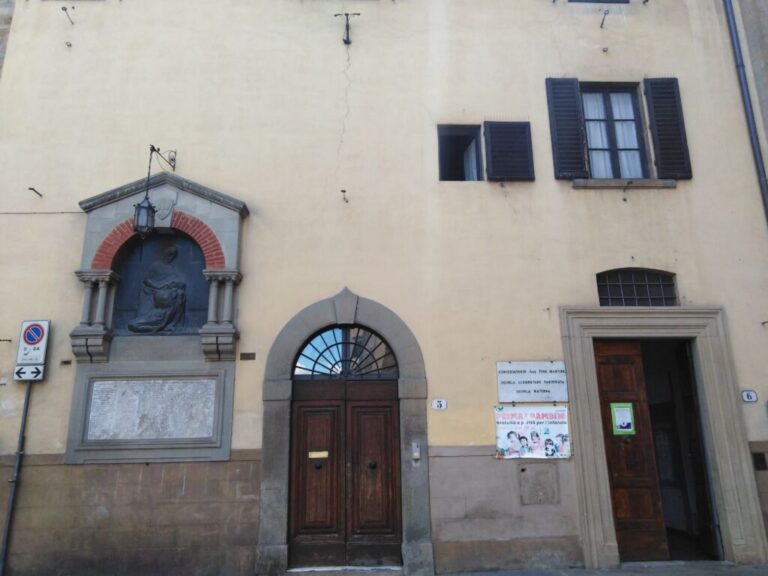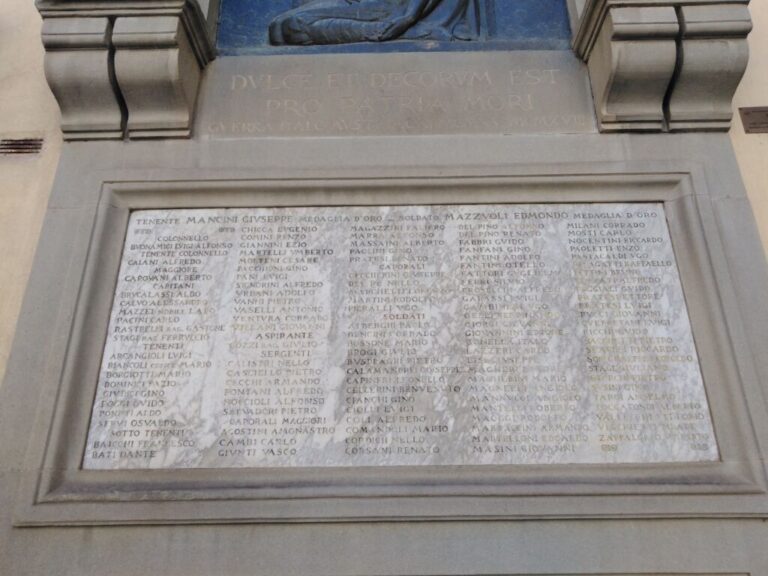Tabernacles of Florence
Piazza San Felice N. 6
THE TABERNACLE
Pietà
The sculptor did not limit himself to the simple plaque with the names of the Fallen, but in the devotional form of the tabernacle and with the bronze statue of the "Pity", he intended to offer passersby a corner of prayer as well as remembrance. This work was built to honor the memory of the Fallen of the Santo Spirito ward in World War I.
Tabernacle
The small arched lintel, resting on paired columns, evidently reminds us of architectural forms of the Florentine Renaissance, resulting sober and elegant: and it was not easy to compare, in such a close space, with the beautiful portal of the Church of San Felice next door attributed to the great Michelozzo.
THE STREET
PIAZZA SAN FELICE
It takes its name from the Church of San Felice di Paola, which contains works of great value. The column in the center of the square, in beautiful variegated Serravezza marble, reminds us of a page in Florentine history: it was built by Cosimo I after his victory over Siena, at Scannagallo near Marciano, on August 2, 1554. According to the plan, it was to support the statue of peace but was never completed for this reason in 1838, in a very different historical context, Grand Duke Leopold II had it removed. However, the Medici column was recently relocated to its original place as a historical testimony.
AUTHOR
Luigi Luparini
(Florence 1887 - 1943) He trained at the Academy of Fine Arts in Florence among the students of Augusto Rivalta. In 1917 he participated in the National Art Exhibition at the Royal Academy of Brera and Society for Fine Arts, presenting there the bronze sculpture "Putto per Fontana”.
The sculptor
(Florence 1887 - 1943) In the 1920s he participated in the so-called "monumentomania" and, among his many works, sculpted the war memorial described so far. At the Porte Sante cemetery he created the tomb for the Della Porta couple. In 1924 he became a full professor in the Academy. In 1942 he participated with other Tuscan artists in the Düsseldorf art exhibition.
Curiosity
The patriotic animation of Piazza San Felice, during the Risorgimento uprisings, is told to us, with moved participation, by the English poetess, Elizabeth Barrett Browning, who saw and recorded everything from the windows of the house where she lived (Casa Guidi). Barrett and her husband Robert Browning, both celebrated poets, had come to live in Italy when they married, after a romantic love affair thwarted by her family. From those windows the poetess, forced into a withdrawn life by her failing health, watched everything siding with the revolutionaries.
OTHER INFORMATION
Info
AMICI DEI MUSEI FIORENTINI ODV - COMITATO PER IL DECORO E IL RESTAURO DEI TABERNACOLI File by Chiara Sestini and Doretta Ermini - Restoration by the City of Florence (2007) - Restorer: Daniela Valentini
Tabernacle owned by the City of Florence
Tabernacle owned by the City of Florence
PICTURES

Tabernacle
Piazza San Felice n. 6

Streetview
Piazza San Felice n. 6

Commemorative Plaque
Piazza San Felice n. 6
